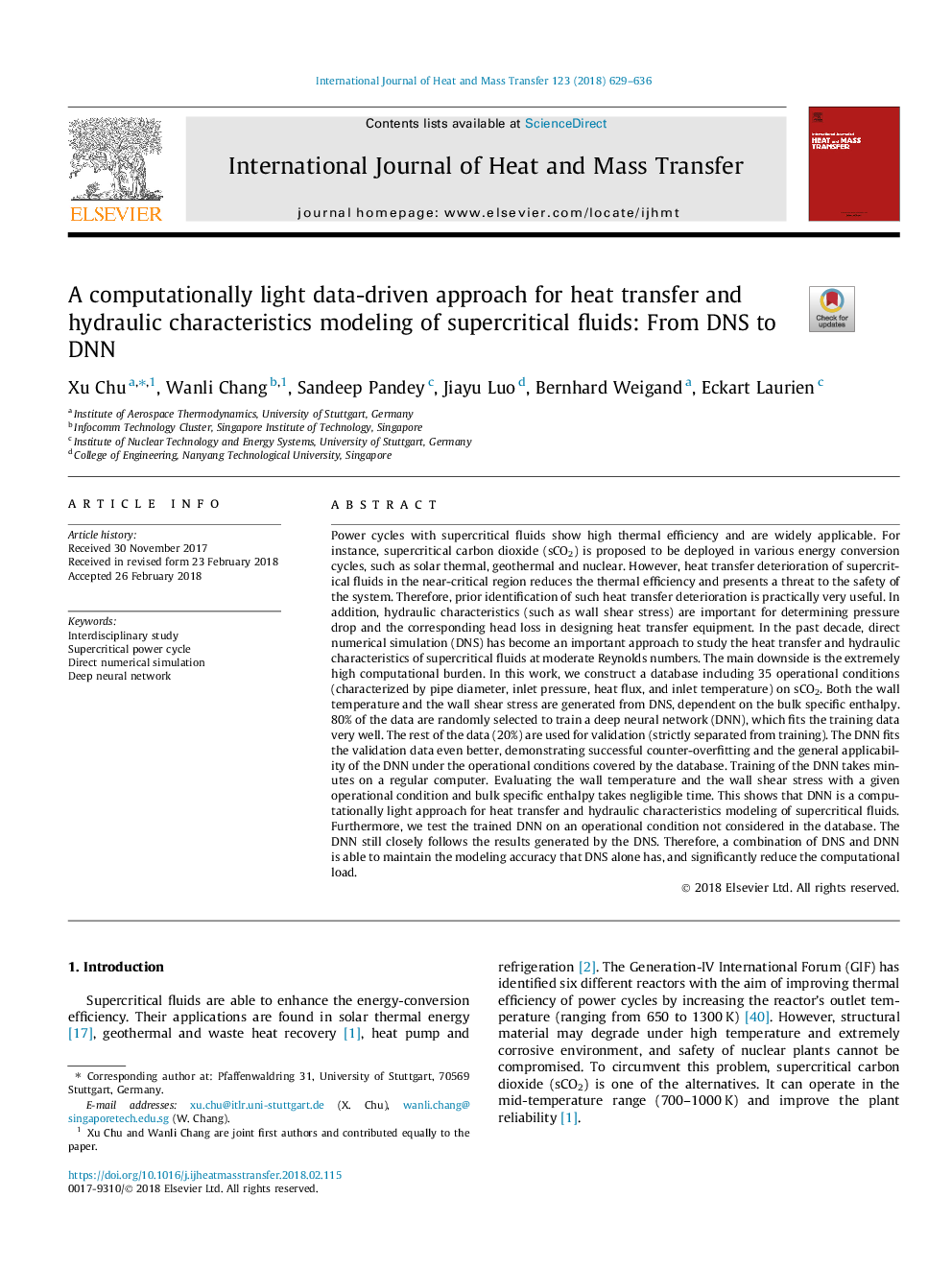| کد مقاله | کد نشریه | سال انتشار | مقاله انگلیسی | نسخه تمام متن |
|---|---|---|---|---|
| 7054288 | 1458017 | 2018 | 8 صفحه PDF | دانلود رایگان |
عنوان انگلیسی مقاله ISI
A computationally light data-driven approach for heat transfer and hydraulic characteristics modeling of supercritical fluids: From DNS to DNN
دانلود مقاله + سفارش ترجمه
دانلود مقاله ISI انگلیسی
رایگان برای ایرانیان
کلمات کلیدی
موضوعات مرتبط
مهندسی و علوم پایه
مهندسی شیمی
جریان سیال و فرایندهای انتقال
پیش نمایش صفحه اول مقاله

چکیده انگلیسی
Power cycles with supercritical fluids show high thermal efficiency and are widely applicable. For instance, supercritical carbon dioxide (sCO2) is proposed to be deployed in various energy conversion cycles, such as solar thermal, geothermal and nuclear. However, heat transfer deterioration of supercritical fluids in the near-critical region reduces the thermal efficiency and presents a threat to the safety of the system. Therefore, prior identification of such heat transfer deterioration is practically very useful. In addition, hydraulic characteristics (such as wall shear stress) are important for determining pressure drop and the corresponding head loss in designing heat transfer equipment. In the past decade, direct numerical simulation (DNS) has become an important approach to study the heat transfer and hydraulic characteristics of supercritical fluids at moderate Reynolds numbers. The main downside is the extremely high computational burden. In this work, we construct a database including 35 operational conditions (characterized by pipe diameter, inlet pressure, heat flux, and inlet temperature) on sCO2. Both the wall temperature and the wall shear stress are generated from DNS, dependent on the bulk specific enthalpy. 80% of the data are randomly selected to train a deep neural network (DNN), which fits the training data very well. The rest of the data (20%) are used for validation (strictly separated from training). The DNN fits the validation data even better, demonstrating successful counter-overfitting and the general applicability of the DNN under the operational conditions covered by the database. Training of the DNN takes minutes on a regular computer. Evaluating the wall temperature and the wall shear stress with a given operational condition and bulk specific enthalpy takes negligible time. This shows that DNN is a computationally light approach for heat transfer and hydraulic characteristics modeling of supercritical fluids. Furthermore, we test the trained DNN on an operational condition not considered in the database. The DNN still closely follows the results generated by the DNS. Therefore, a combination of DNS and DNN is able to maintain the modeling accuracy that DNS alone has, and significantly reduce the computational load.
ناشر
Database: Elsevier - ScienceDirect (ساینس دایرکت)
Journal: International Journal of Heat and Mass Transfer - Volume 123, August 2018, Pages 629-636
Journal: International Journal of Heat and Mass Transfer - Volume 123, August 2018, Pages 629-636
نویسندگان
Xu Chu, Wanli Chang, Sandeep Pandey, Jiayu Luo, Bernhard Weigand, Eckart Laurien,